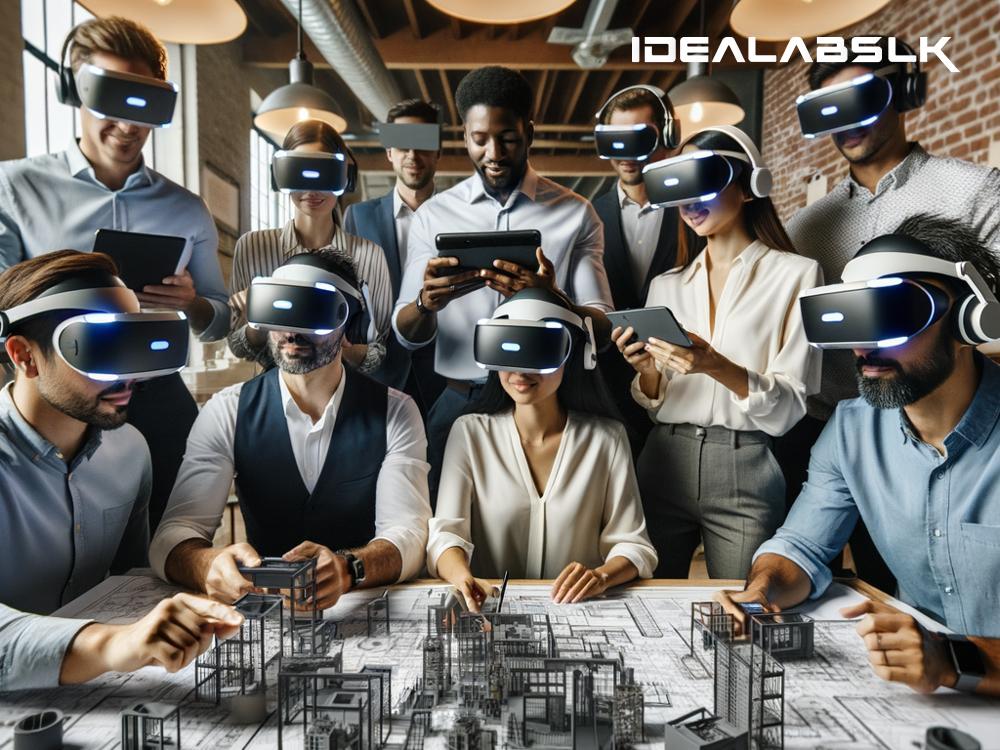How Mixed Reality (MR) Devices Drive Innovation
In a world where technology constantly evolves, Mixed Reality (MR) stands out as a shining beacon of innovation. But what exactly is Mixed Reality? Imagine combining the real world with digital elements - like having animated characters walk around your living room or being able to manipulate digital objects as if they were really there. That's Mixed Reality for you! It blends the physical and digital worlds in ways that were mere fantasy a few decades ago. Let's dive into how MR devices are revolutionizing various fields and driving forward the wheel of innovation.
Transforming Education
Remember those days in school when you struggled to visualize complex concepts from textbooks? Mixed Reality is changing that. With MR devices, students can see and interact with 3D models, making learning more engaging and fun. Imagine learning about the human body by looking at a life-size 3D heart floating in the middle of the classroom, beating and showing how blood flows. Such immersive experiences make learning come alive, helping students grasp complex ideas quickly and retain information longer.
Revolutionizing Healthcare
Mixed Reality is also making waves in healthcare, transforming how medical professionals train, diagnose, and treat. Surgeons can now use MR glasses to see through the skin and visualize bones, organs, and blood vessels during surgeries, drastically improving precision. Additionally, medical students can practice surgeries on virtual patients, allowing them to hone their skills without any risk. For patients, MR can provide virtual support and guidance for rehabilitation exercises at home, adding a layer of convenience and effectiveness to recovery processes.
Enhancing Retail Experiences
Shopping has taken a futuristic turn with Mixed Reality. Retailers are using MR to create immersive shopping experiences, allowing customers to 'try before they buy' in exciting new ways. Picture yourself walking into a furniture store, wearing MR glasses, and seeing how a new couch would look and fit in your living room without leaving the store. Or imagine trying on clothes virtually, switching sizes, colors, and styles with a simple gesture. This not only enhances customer satisfaction but also reduces the hassle of returns and exchanges.
Boosting Design and Manufacturing
In the world of design and manufacturing, MR devices are a game-changer. Engineers and designers can now prototype and test their creations in a mixed reality environment, speeding up the design process and reducing costs. For instance, car manufacturers can design and tweak new car models in MR, visualizing changes immediately without needing to build multiple physical prototypes. This innovative approach encourages creativity, allows for rapid iterations, and brings products to market faster.
Fostering Remote Collaboration
In today's global environment, effective collaboration across distances is crucial. Mixed Reality is breaking down geographical barriers, allowing people to work together as if they were in the same room. With MR, team members can interact with 3D models, discuss changes, and make decisions in real-time, regardless of their physical location. This not only streamlines the collaboration process but also fosters a deeper connection among team members, driving productivity and innovation.
Preparing for Emerging Challenges
As exciting as these applications are, integrating MR into daily operations poses its own set of challenges. Privacy and data security are significant concerns, given the amount of personal and sensitive information MR devices can collect. Moreover, the cost of MR technology and the need for specialized skills to develop and manage MR experiences are barriers to widespread adoption. However, as MR technology continues to evolve and become more accessible, these challenges are likely to diminish, paving the way for even broader applications and innovations.
Conclusion
Mixed Reality is not just another tech trend; it's a driving force behind innovation across multiple industries. By merging the digital and physical worlds, MR devices are opening up new avenues for learning, enhancing healthcare, revolutionizing retail experiences, boosting design and manufacturing processes, and fostering remote collaboration. As we continue to explore the potential of MR, we can expect to see even more creative and innovative applications that will shape our future. The mixed reality revolution is just beginning, and its impact on our lives and work is set to be profound. Let's embrace this exciting journey into the seamless integration of our digital and physical worlds.

